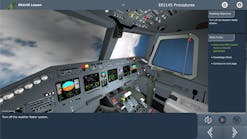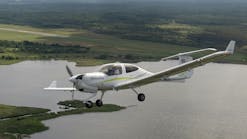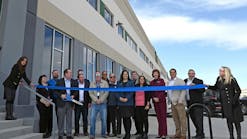As Aircraft Maintenance Technicians (AMT) perform their duties, many are not aware of how maintenance evolved. There have been questions about why do maintenance personnel have to perform the tasks they are presented with? To answer that question, we have to look at the evolution of the maintenance process starting with were maintenance comes from for aviation. The best place to start is with the Maintenance Steering Group (MSG) guidance.
The MSG guidance was created in order to establish a schedule for aircraft maintenance and its components. It evolved over time through the design development of manufacturing and with information gathered following aircraft failure investigations. The first instance of insight influencing aircraft maintenance scheduling was after The de Havilland Comet Crashes of 1949. A brief history can be found here:
https://www.youtube.com/watch?v=2rvx-r2itrE
From this incident, aircraft manufactures continued to develop the “overhaul and replace at time intervals" maintenance methods.
In 1968, the Boeing Company developed the MSG for the purpose of establishing a maintenance schedule for their B747-100 and to ensure safety and reliability for the new aircraft by the different airline operations. This approach moved away from the tradition of "overhaul and replace at time intervals" to one that considered the type of tasks and intervals needed to keep the aircraft safe. MSG was found to be very successful because it:
1.) Saved time
2.) Saved money
3.) Saved on unnecessary interference with components
Following the success of the MSG philosophy, the company found reason to apply the same approach to their other aircraft. Thus, MSG was made applicable to more aircraft by making it more general in scope and nature. This allowed the process to fit any airframe. Subsequently, MSG-2 was created and used for developing scheduled maintenance for 1970’s aircraft such as L1011 and DC-10. MSG-2 was process orientated and used a bottom-up approach. It also introduced ‘condition monitored maintenance’ concept; however, over time MSG2 was found to have some significant drawbacks.
These included:
- Does not take the economic view into the consideration.
The MSG2 philosophy simply maintains aircraft safety at any cost
- Does not address “hidden failures” to pilots
These are items that can fail, yet don’t yield a “Flight Deck Effect”.
These can be electric and electronic failures
Also fatigue inside the structure, etc…
- MSG2’s bottom-up approach required more staff
- Some of the maintenance tasks and definitions within MSG2 contradicted each other
- Does not take the modern corrosion prevention approach into account by specifying different corrosion levels.
To overcome these drawbacks, the Maintenance Steering Group revision 3 (MSG3) guidelines came into existence in 1980. Today, most of the world's aircraft maintenance organizations use MSG3 approach to coordinate the development of maintenance tasks and allow options in the scheduling of maintenance.
Maintenance Program tasks are developed using an MSG-3 based, guided logic approach and result in task-oriented programs. Maintenance task development starts with identification of Maintenance Significant Items (MSI) and Structural Significant Items (SSI). The MSI items are developed into: functions, functional failures, failure effects, failure causes and additional data which are listed for further analysis. Consequences of failure are evaluated at the top of the MSI logic to determine one of five failure effect categories:
1. Evident Safety (Category 5)
2. Evident Operational (Category 6)
3. Evident Economic (Category 7)
4. Hidden Safety (Category 8)
5. Hidden Non-Safety (Category 9)
Each SSI is assessed in terms of its significance to continuing airworthiness, susceptibility to:
1.) Fatigue damage (FD)
2.) Environmental damage (ED)
3.) Accidental damage (AD)
The categories include degree of difficulty involved in detecting such damage.
Among other considerations, the consequences of structural damage remaining undetected are evaluated. All SSI's fall in the safety branch of a structures logic diagram and there are only two outcomes: discard for safe-life elements (i.e., life limited parts), or inspection.
Other items the MSG3 process introduced where:
o Corrosion Prevention and Control Program (CPCP) program
o Critical Design Configuration Control Limitation CDCCL) analysis
o Service Difficulty Report (SDR)
These will be discussed in the next sections.
Corrosion Prevention and Control Program (CPCP)
The Corrosion Prevention and Control Program (CPCP) are maintenance tasks obtained from special CPCP analysis of the critical structures with high probability of corrosion in the aircraft. This analysis is only applicable to structures where agents of corrosion are present and where corrosion problems will be an issue. This analysis is combined with the MSG3 analysis and is generally presented in the Maintenance Reliability Report (MRB) report.
Corrosion discovered in basic task areas (as defined in the applicable baseline CPCP documents) must be evaluated and divided into three categories, or levels.
o Level 1 being less sever
o Level 2
o Level 3 being the most sever
Critical Design Configuration Control Limitation (CDCCL)
The MSG3 philosophy also ushered in the Critical Design Configuration Control Limitation (CDCCL) analysis. These are maintenance tasks obtained for critical fuel tank systems in order to ensure unsafe conditions do not develop during the service life of the aircraft. These tasks reduce the probability of fuel tanks ignition during service life. This is required by the Special Federal Aviation Regulation 88 (SFAR88) Fuel tank safety requirement. This was enforced with the TWA-800 incident: https://www.youtube.com/watch?v=XkAlwB77nIs. The Federal Aviation Administration (FAA) issued this far-reaching safety rule to minimize ignition sources in aircraft fuel tanks.
Airline operators have specific SFAR88 tasks. The CDCCLs are included in the SFAR88 items; however, CDCCLs are not necessarily a “task” but more like a “condition”. Therefore, our maintenance program ensures the original condition of the CDCCL is maintained. If disturbed through our routine maintenance program, the aircraft, and subsequently the CDCCL condition, must be returned to its original design configuration.
Today, if we know our maintenance program routinely disturbs a CDCCL condition from its original design, then we “plan” the CDCCL restoration as we would a task.
Life Limited Parts (LLP)
The MSG3 adoption also introduced the Life Limited Parts (LLP), sometimes referred to as Life Limited Component (LLC) processes. These are all aircraft parts that have a limited time of use for operation. All LLP parts must be removed from the aircraft before the life ends. The life of a part is determined through detail fail analysis of the part by the component manufacture. This analysis is combined with the MSG3 analysis and is generally presented in the Maintenance Reliability Board Report (MRBR) by the manufacture.
The Maintenance Review Board Report (MRBR) contains the routine operations as developed by the OEM to maintain the systems in an airworthy condition. This is approved by the FAA Aircraft Evaluation Groups (AEG) office. The FAA established the AEG office to provide Aircraft Certification Directorates support for the managing of aircraft certification programs. The AEG also assists in the oversight of continued airworthiness and operational aspects of the aircraft throughout its operational life.
Service Difficulty Report (SDR)
One last item of importance is the Service Difficulty Report (SDR) which is the means a certificate holder uses to report the occurrence or detection of any failure, malfunction, or defect in an aircraft. When this occurs or is detected, that failure, malfunction, or defect has endangered or may endanger the safe operation of an aircraft. Field Maintenance, Depot Maintenance, Shop Maintenance, Engineering, and Vendors are responsible for indicating that an item is SDR reportable on the discrepancy page for the aircraft or any engineering documentation.
As added oversight, an operators Reliability Programs Group should review all aircraft discrepancy pages and maintenance repairs entered into a maintenance tracking system for possible SDR reporting requirements. Once confirmed as a requirement, the operator is responsible, for items not indicated as SDR reportable but found to be reportable, to electronically transmit the data to the FAA database.
This reporting is described in 14 CFR 121.703 and requires reporting within 96 hours (exclusive of weekends and holidays) after it is determined as SDR reportable. When an aircraft is out-of-service for more than 72 hours due to scheduled maintenance, preventive maintenance, and alteration then the reporting requirement will be within 96 hours of completing the aircraft airworthiness release.
This has been a basic overview to help understand why maintenance is performed on aircraft and how it has evolved overtime. The MSG3 philosophy has helped make aviation the safest form of travel.
Eric Klein is a senior research associate at the Georgia Tech Research Institute (GTRI). His research focuses on increasing utilization through higher fidelity logistics and process improvements. Eric recently retired from Delta Air Lines where he served over 25 years in the pursuit of operational excellence
Dr. Anne Clark currently serves as the Chief Scientist for the Air National Guard Program Office. She joined GTRI in 2018, bringing more than 25 years of leadership from defense technology and academic environments. Previously, she served as an Air Force Colonel and the Associate Director for the Aerospace Systems Directorate of the Air Force Research Laboratory (AFRL) and Commander of Detachment 7 at the AFRL’s Rocket Lab, Edwards AFB in California, with prior service as the Military Assistant to the Chief Scientist of the Air Force in the Pentagon.





